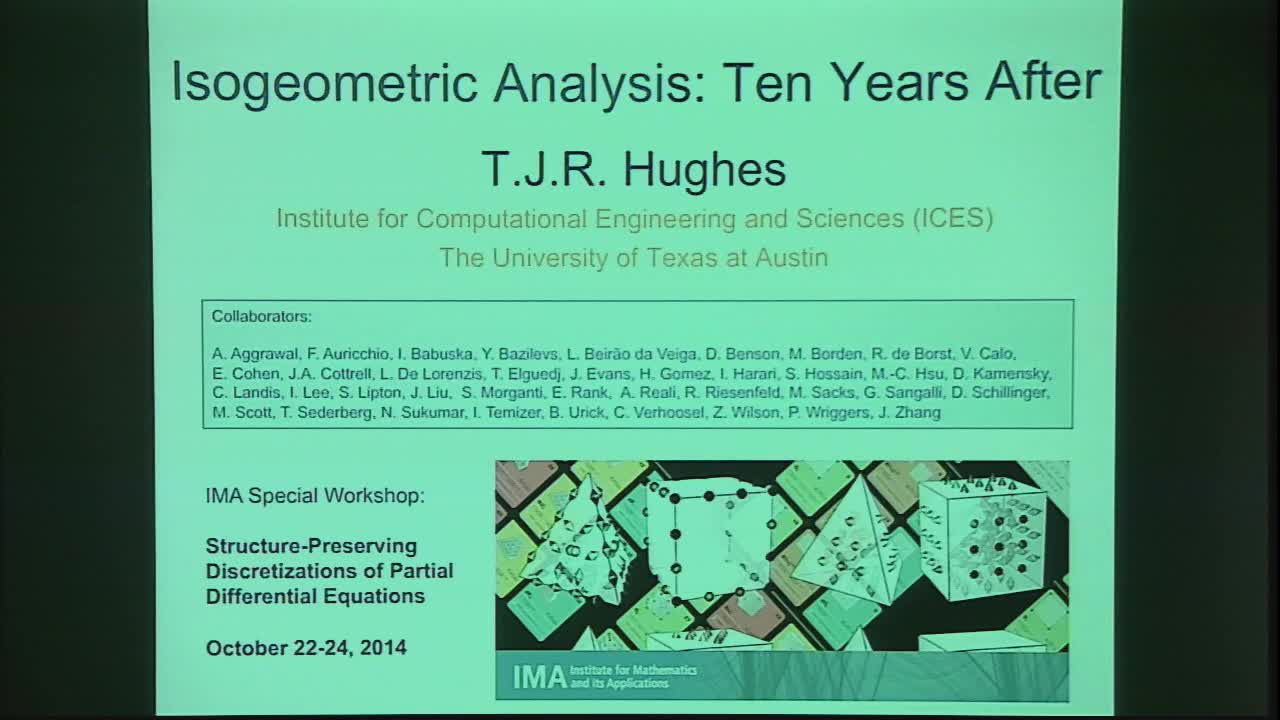Isogeometric Analysis: Ten Years After
Presenter
October 22, 2014
Keywords:
- Geometry, computational
MSC:
- 65Dxx
Abstract
Ten years ago last May, I presented a lecture entitled “Consider a Spherical Cow – Conservation of Geometry in Analysis: Implications for Computational Methods in Engineering” during the IMA Workshop Compatible Spatial Discretizations for Partial Differential Equations (May 11-15, 2004). In that lecture I coined the term Isogeometric Analysis [1,2], a pithy terminology for my vision of how to address a major problem in Computer Aided Engineering (CAE). The motivation was as follows: Designs are encapsulated in Computer Aided Design (CAD) systems. Simulation is performed in Finite Element Analysis (FEA) programs. FEA requires the conversions of CAD descriptions to analysis-suitable formats form which finite element meshes can be developed. The conversion process involves many steps, is tedious and labor intensive, and is the major bottleneck in the engineering design-through-analysis process, accounting for more than 80% of overall analysis time, which remains an enormous impediment to the efficiency of the overall engineering product development cycle.
Since its inception ten years ago, Isogeometric Analysis has become a focus of research within both the fields of FEA and CAD and is rapidly becoming a mainstream analysis methodology and a new paradigm for geometric design. The key concept utilized in the technical approach is the development of a new paradigm for FEA, based on rich geometric descriptions originating in CAD, resulting in a single geometric model that serves as a basis for both design and analysis.
In this talk I will describe areas in which progress has been made in developing improved Computational Mechanics methodologies to efficiently solve vexing problems that have been at the very least difficult, if not impossible, within traditional FEA. I will also describe current areas of intense activity and areas where problems remain open, representing opportunities for future research.
REFERENCES
[1] T.J.R. Hughes, J.A. Cottrell and Y. Bazilevs, Isogeometric Analysis: CAD, Finite Elements, NURBS, Exact Geometry and Mesh Refinement, Computer Methods in Applied Mechanics and Engineering, 194, (2005) 4135-4195.
[2] J.A. Cottrell, T.J.R. Hughes and Y. Bazilevs, Isogeometric Analysis: Toward Integration of CAD and FEA, Wiley, Chichester, U.K., 2009.
